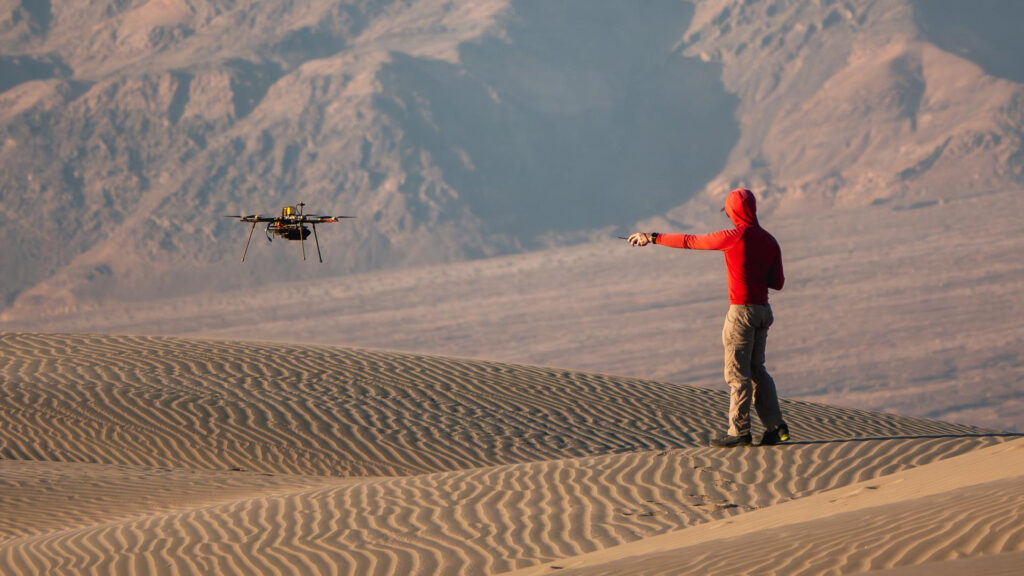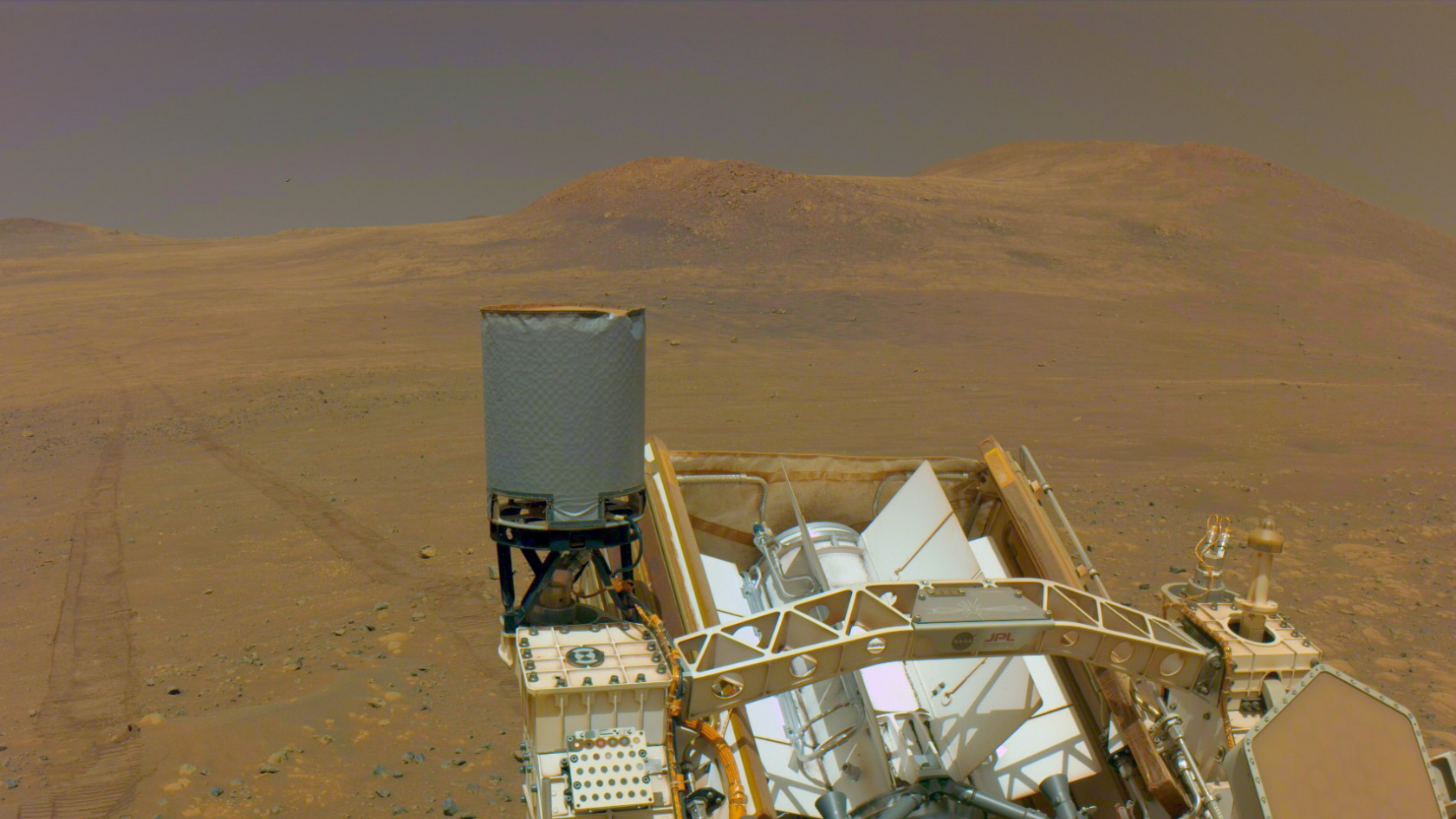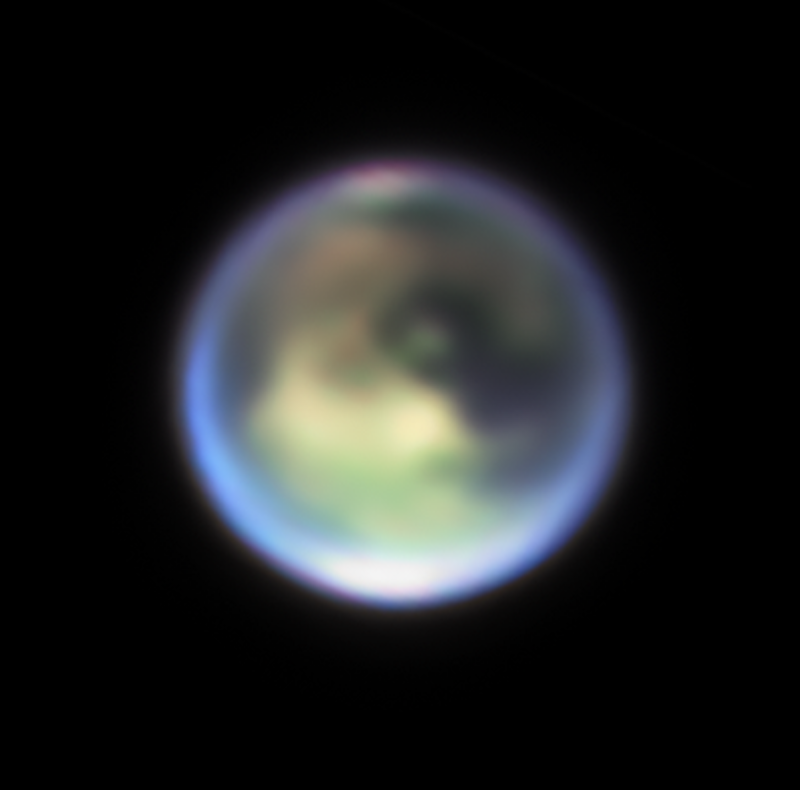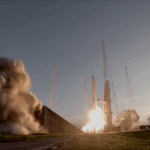Now Reading: See the crescent moon rise close to Saturn and Neptune early on May 22
-
01
See the crescent moon rise close to Saturn and Neptune early on May 22
See the crescent moon rise close to Saturn and Neptune early on May 22
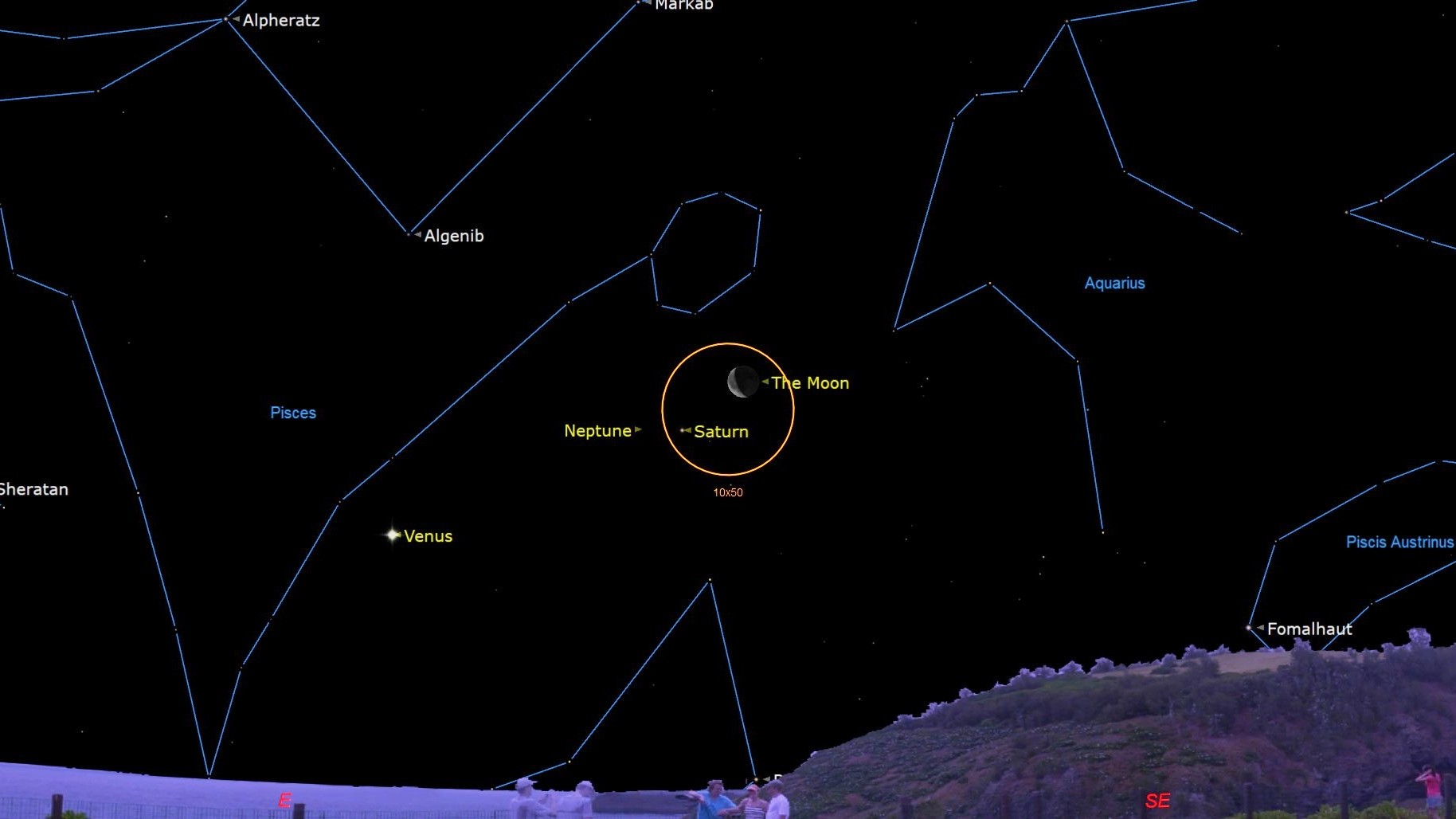
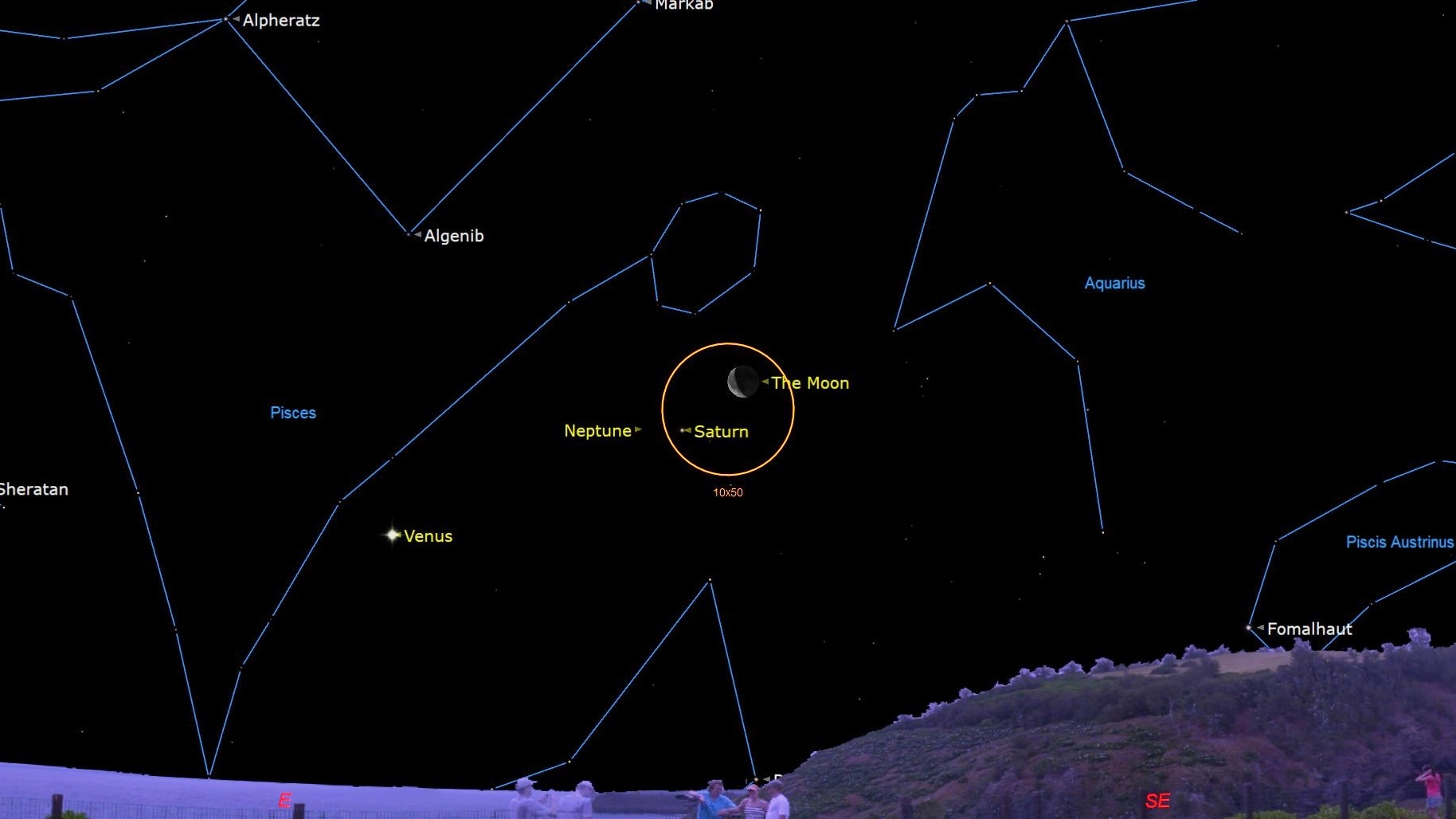
The moon will rise with Venus and the ice giant Neptune in the pre-dawn sky on Thursday, May 22.
Stargazers in the U.S. will see the celestial trio rise around 3:30 a.m. EDT (0715 GMT), with the waning crescent moon holding the high ground over magnitude 1.14 Saturn, which will be visible around four degrees to its lower left in the eastern sky. Neptune — invisible to the naked eye at magnitude 7.92 — can be found lurking roughly two degrees (or two finger widths) to the left of Saturn. (On the magnitude scale used by astronomers, lower numbers signify brighter objects). For example, at its brightest, the planet Venus shines with a magnitude of about -4.6.)
Neptune may be visible under dark skies with the help of powerful 25×100 binoculars as a star-like point of light, but a small, 4-inch telescope capable of around 150x magnification will be needed to resolve its pale blue disk, according to telescope manufacturer Celestron. Saturn, meanwhile, will shine brightly through binoculars, with the planet’s iconic ring system appearing as small bumps, or ‘ears’ either side of the planet’s disk, according to NASA.
However, the Saturnian system truly comes alive when viewed through a telescope, which will reveal details in the gas giant‘s rings, along with a diverse collection of gravitationally bound moons. Larger backyard telescopes with a roughly 8-inch aperture may even be able to resolve the Cassini Division — a gap between Saturn’s outer A ring and B ring that comes close to spanning the width of the planet Mercury, under good conditions.
TOP TELESCOPE PICK:
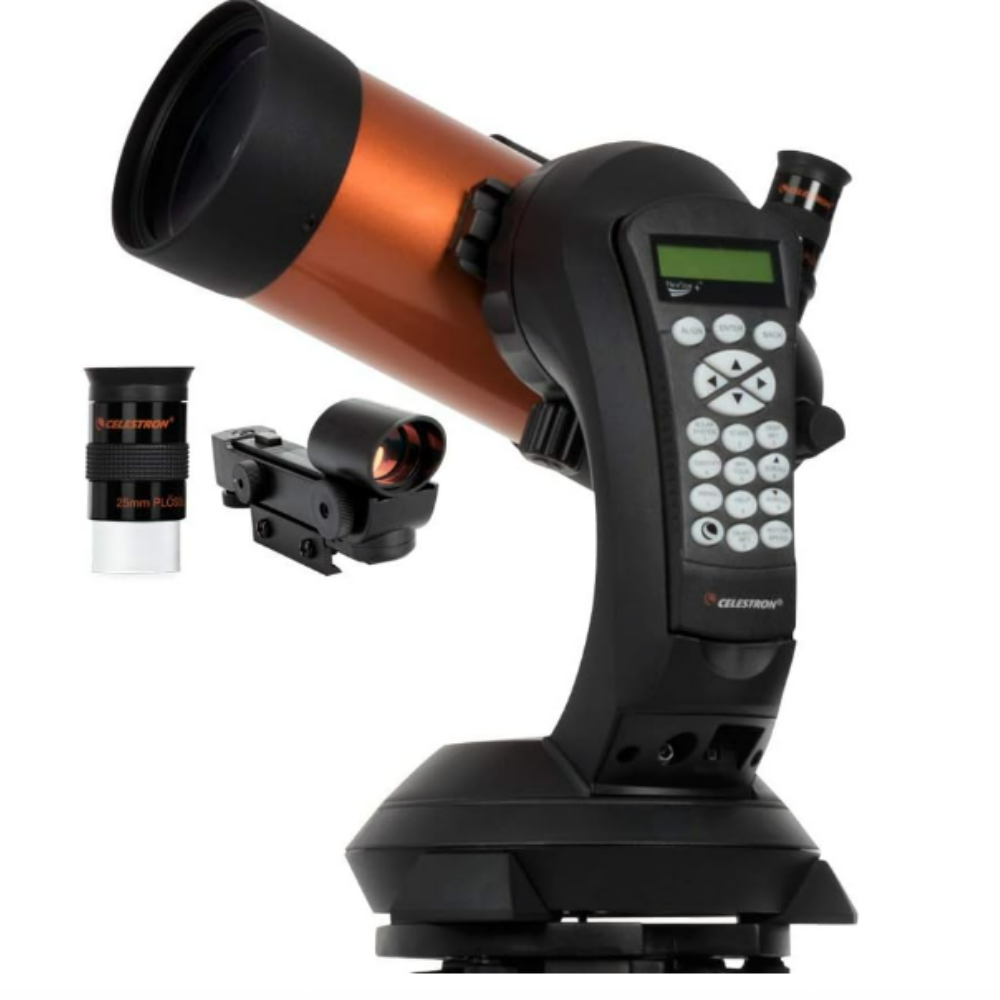
Want to see the planets of our solar system for yourself? The Celestron NexStar 4SE is ideal for beginners wanting quality, reliable and quick views of celestial objects. For a more in-depth look at our Celestron NexStar 4SE review.
The crescent moon also makes for a fascinating viewing target. The northwestern region is home to the smooth, dark plains of the lunar maria (Latin for “seas”), while the brighter southern highlands are covered in craters left by ancient asteroid impacts. The moon‘s crescent will slim over the coming days as it approaches the new moon phase on May 27, when it will vanish into the glare of the sun.
The following morning, on May 23, the moon will rise to the left of Saturn and Neptune, closing in on a striking close encounter with Venus, a brilliant “morning star” hovering close to the eastern horizon. Venus —often dubbed Earth‘s twin is climbing higher each morning as it heads towards greatest western elongation on May 31 — the point in its orbit when it appears farthest from the sun in the morning sky, according to in-the-sky.org.
Stargazers interested in exploring the wonders of the solar system planets and Earth’s moon for themselves should check out our guides to the best binoculars deals and the best telescope deals in 2025.
Editor’s Note: If you would like to share your astrophotography with Space.com’s readers, then please send your photo(s), comments, and your name and location to spacephotos@space.com.
Stay Informed With the Latest & Most Important News
Previous Post
Next Post
-
 012024 in Review: Highlights from NASA in Silicon Valley
012024 in Review: Highlights from NASA in Silicon Valley -
 02Panasonic Leica Summilux DG 15mm f/1.7 ASPH review
02Panasonic Leica Summilux DG 15mm f/1.7 ASPH review -
 03From Polymerization-Enabled Folding and Assembly to Chemical Evolution: Key Processes for Emergence of Functional Polymers in the Origin of Life
03From Polymerization-Enabled Folding and Assembly to Chemical Evolution: Key Processes for Emergence of Functional Polymers in the Origin of Life -
 04How New NASA, India Earth Satellite NISAR Will See Earth
04How New NASA, India Earth Satellite NISAR Will See Earth -
 05And Thus Begins A New Year For Life On Earth
05And Thus Begins A New Year For Life On Earth -
 06Astronomy Activation Ambassadors: A New Era
06Astronomy Activation Ambassadors: A New Era -
07SpaceX launch surge helps set new global launch record in 2024












